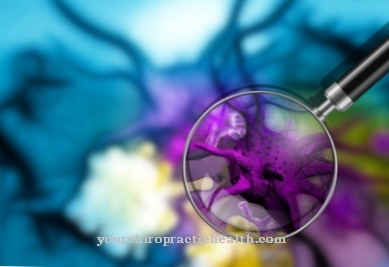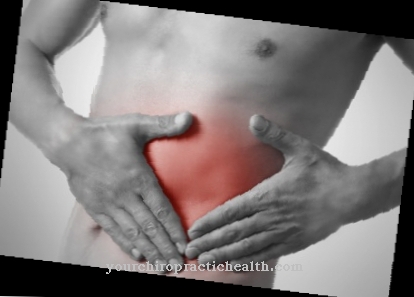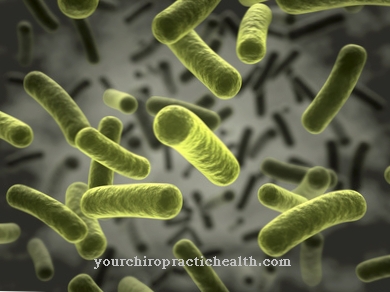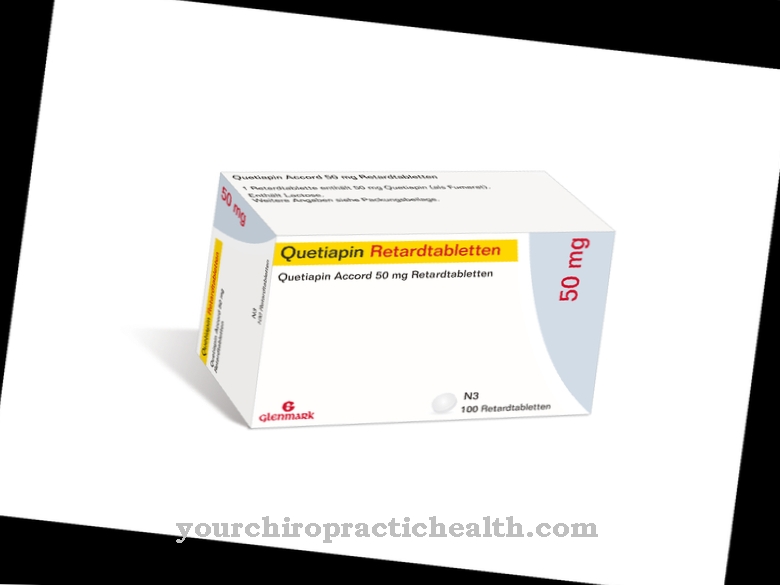Adenosine is an essential building block for the energy metabolism of the human body. Therapeutically, adenosine is used in particular to regulate cardiac arrhythmias and to lower blood pressure.
What is adenosine?

Adenosine is an endogenous nucleoside that is indispensable for energy metabolism and is composed of the purine base adenine and β-D-ribose. It is the basic building block of adenosine triphosphate (ATP), an important supplier of energy for all tissue cells in the human organism.
In all energy-consuming cell processes, ATP is broken down to ensure the energy requirement and its component adenosine is released. The concentration of adensosin in the blood increases accordingly under physical exertion.
In addition, adenosine is a component of ribonucleic acids (DNA building block), coenzymes and nucleoside antibiotics. Adenosine has a similar molecular structure to caffeine and occupies the same receptors, but without stimulating them. The physiological half-life is extremely short at a few seconds.
Pharmacological effect
Adenosine fulfills important functions in the human organism. As an important component of ATP, it serves to regenerate the main energy store involved in all cellular processes. Adenosine is always released from the nerve cells when the energy supply to the neurons is no longer sufficiently ensured.
This is the case, among other things, with ischemia (insufficient blood flow). In contrast to neurotransmitters (biochemical messenger substances), the release is not mediated by the exocytosis of storage vesicles, but via transport proteins. The transport proteins then remove the released adenosine from the extracellular space. In ischemia, there is an increased adenosine concentration in the intracellular space, which causes a reversal of transport. If released ATP is broken down by ectoenzymes (enzymes that act outside the cell), the extracellular adenosine concentration also increases.
In the nervous system, adenosine occupies the receptors intended for caffeine and the neurotransmitters dopamine, noradrenaline and acetylcholine, thus blocking their effect. The more active the nerve cells, the higher the ATP and therefore adenosine concentration. By occupying the receptors, the function of the nerve cells is slowed down and the nervous system is protected from overexertion. As a result of this neurotransmitter blockade, the blood vessels widen (dilatation). There is a consecutive drop in blood pressure (lowering of blood pressure) and a slowdown in heart rate.
Activation of the G-protein-modulated potassium channels (via A1 adenosine receptors) also increases the conduction time in the AV node (atrioventicular node). As a secondary pacemaker of the heart, the AV node is the only connection between the atrium and the ventricle (heart chamber) and regulates the conduction of excitation into the heart chambers.
The delayed transmission of stimuli ensures a coordinated contraction of the heart chamber and atrium. Since the adenosine concentration rises with physical exertion and a lack of oxygen, it is assumed that the increased release prevents inefficient tachycardias and cardiac arrhythmias under stress.
Medical application & use
Adenosine is primarily used as an antiarrhythmic drug for the treatment of cardiac arrhythmias. Due to the very short half-life in the blood, adenosine can be administered intravenously as a short infusion to control blood pressure (lowering blood pressure) and the heart rhythm (3, 6 or 12 mg).
In addition to expanding the peripheral vessels, adenosine also dilates the coronary arteries. Adenosine can terminate AV node-dependent tachycardias by blocking the AV conduction, which is why it is used as the drug of first choice, especially for supraventricular tachycardias such as AV node reentry tachycadias.
Adenosine can also be used to treat atrial tachycardias such as paroxysmal tachycardias (sudden acceleration of the heart rate). Likewise, adenosine is applied within the diagnostics of stress examinations to dilate the heart vessels (imaging of the heart).
You can find your medication here
➔ Medicines for cardiac arrhythmiasRisks & side effects
A locally increased adenosine concentration in the heart due to ischemia can cause bradycardiac arrhythmias (bradycardia). As an antidote, theophylline inhibits the action of adenosine on the corresponding receptor of the heart.
In addition, therapeutically applied adenosine can cause short-term asystole (lack of cardiac muscle contraction) due to its negative dromotropic effect (slowing down the transmission of impulses). In these cases, the adenosine supply should be stopped immediately. Due to the short half-life, the pharmacological effect disappears very quickly.
As a result of the vasodilating effect, flushing symptoms, which are characterized by brief reddening of the skin, can occur. In addition, short-term breathing difficulties, a feeling of pressure in the chest area, headache, dizziness, nausea and tingling sensation can occur with injected adenosine. The use of adenosine is contraindicated in bronchospasm, COPD and bronchial asthma.



























